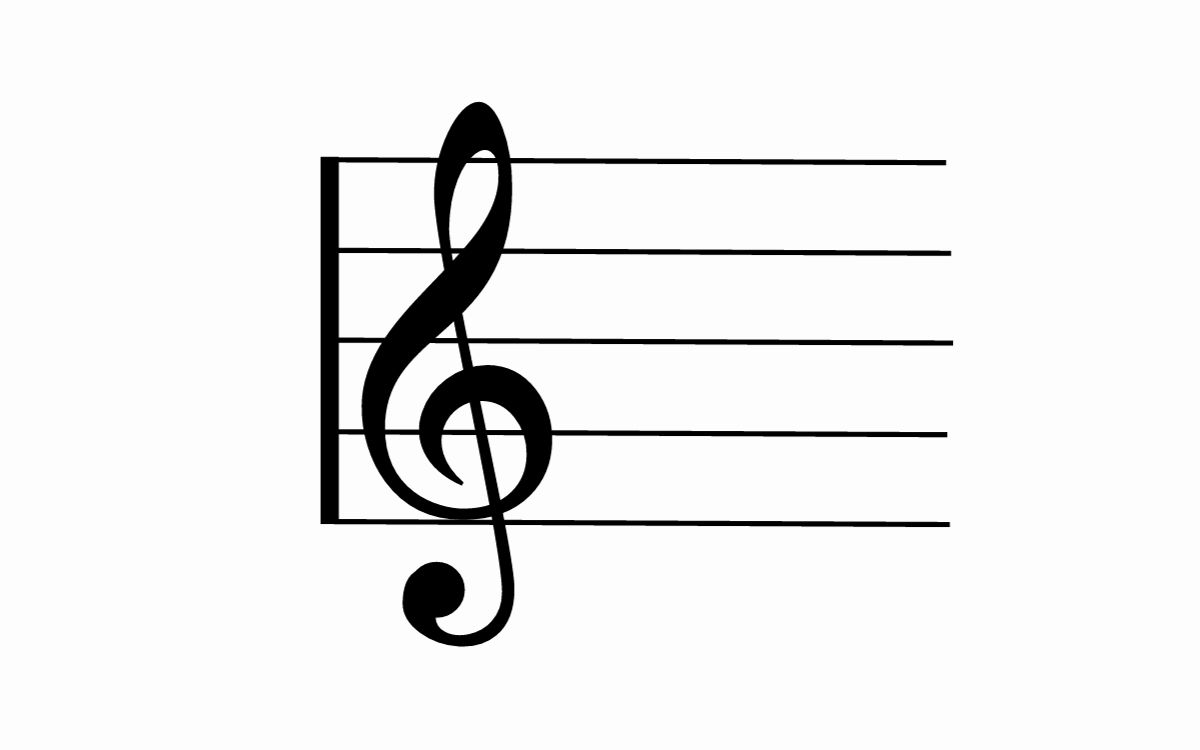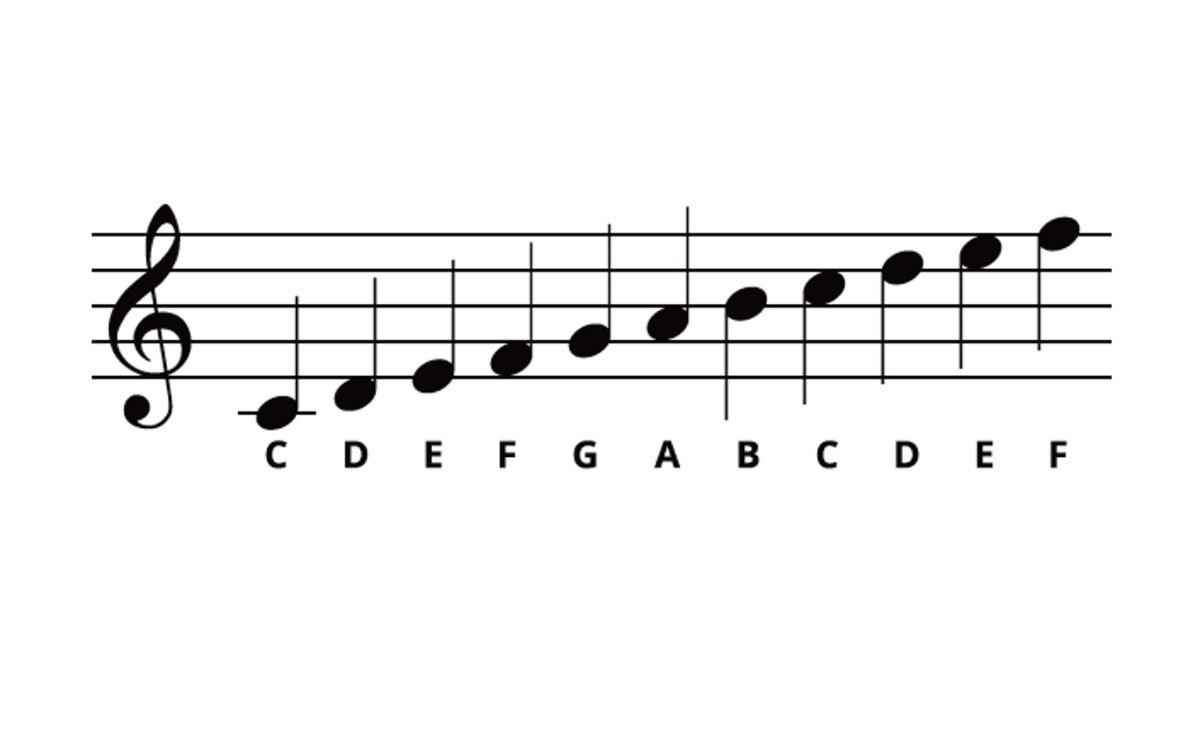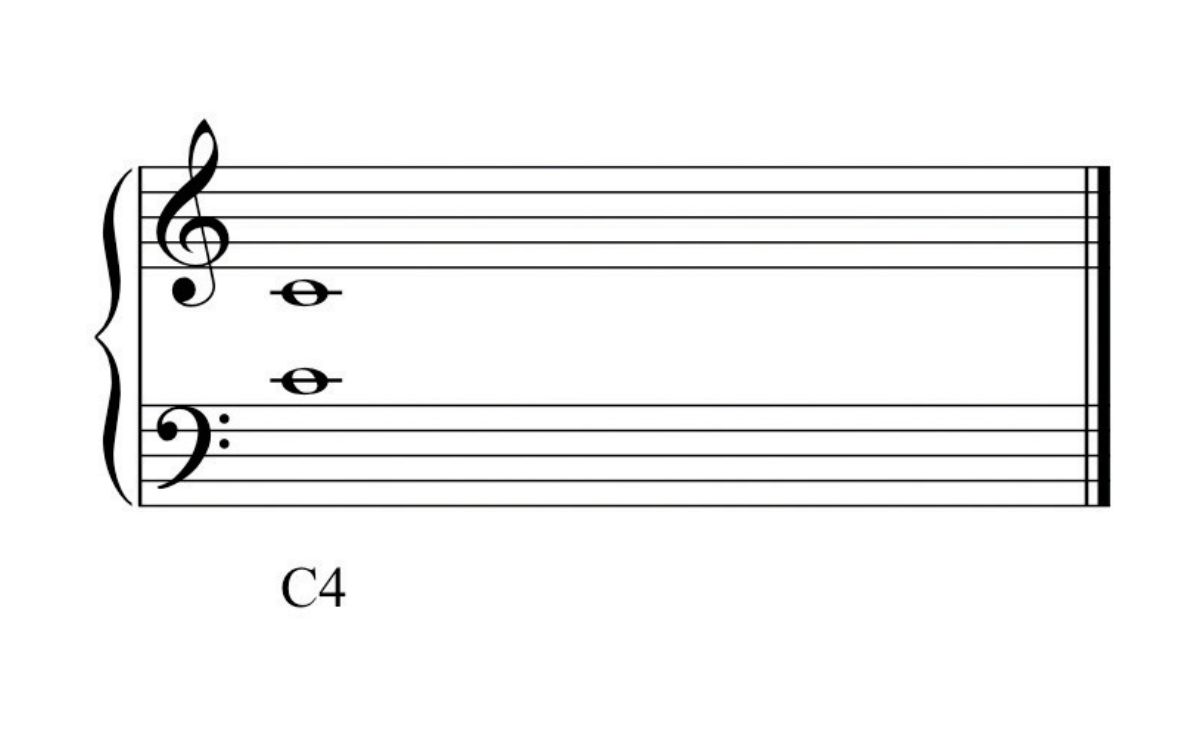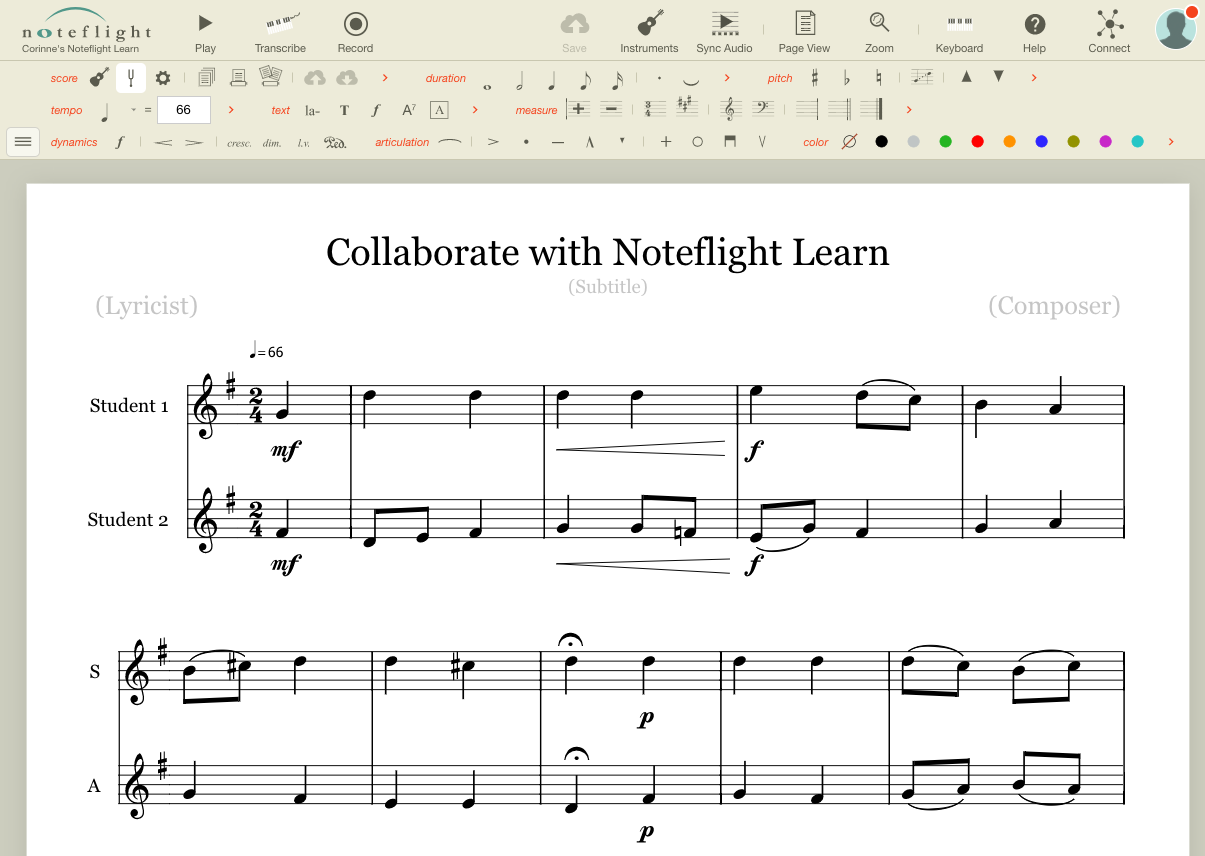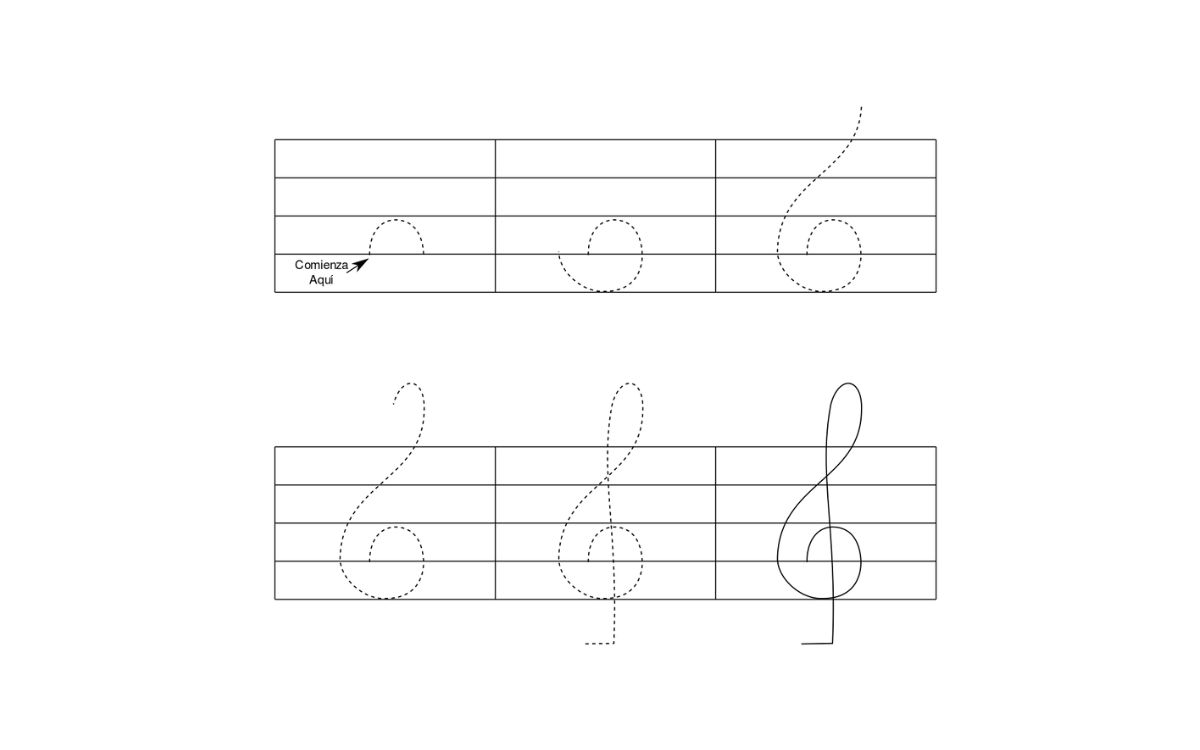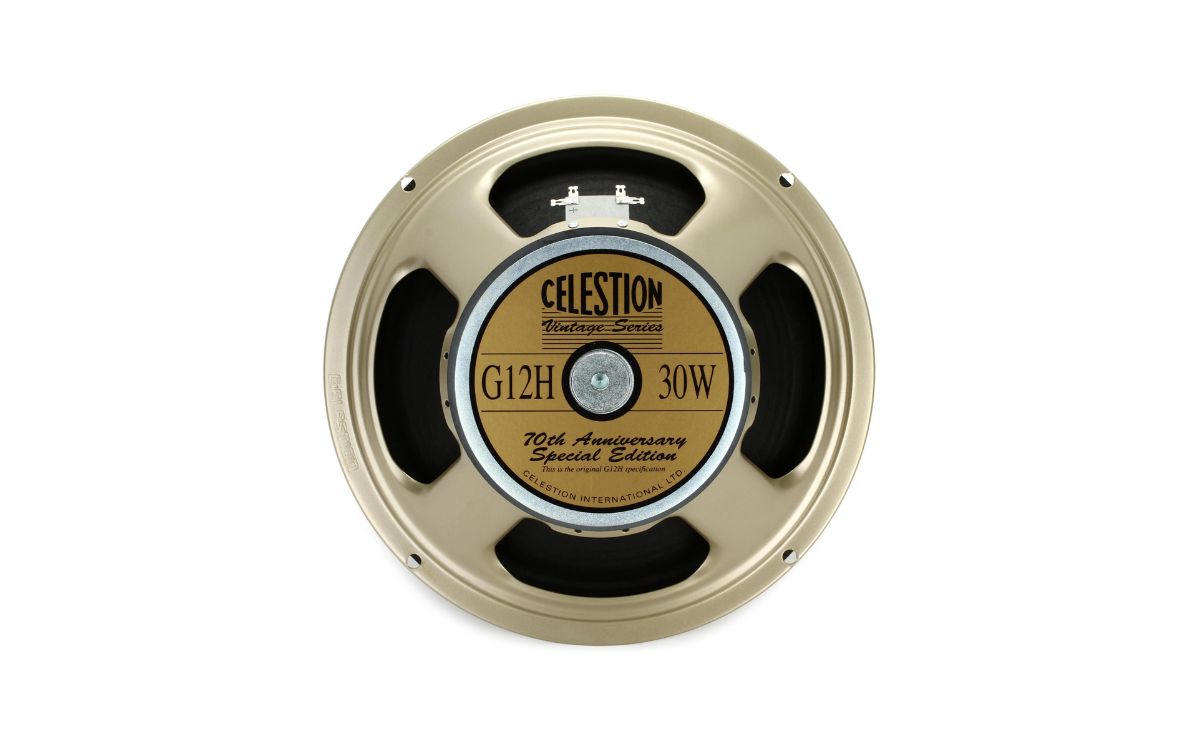Home>Production & Technology>Treble>Why Is The Treble Clef Also Called The G Clef?


Treble
Why Is The Treble Clef Also Called The G Clef?
Published: November 27, 2023
Discover the history behind the name of the treble clef and why it is also known as the G clef. Explore its significance in music notation and composition.
(Many of the links in this article redirect to a specific reviewed product. Your purchase of these products through affiliate links helps to generate commission for AudioLover.com, at no extra cost. Learn more)
Table of Contents
Introduction
When we think of musical notation, one of the first symbols that comes to mind is the treble clef. Its elegant and intricate design is instantly recognizable, but have you ever wondered why it is also called the G clef? In this article, we will explore the origin and significance of the treble clef, shedding light on its relationship to the G note and uncovering its role in music notation.
Throughout history, the treble clef has played a crucial role in representing high-pitched notes in music. It is commonly used to notate the melodies sung by sopranos, altos, and many instruments, including the violin, flute, and trumpet. Understanding the treble clef is fundamental for musicians and music enthusiasts alike, as it serves as a gateway to deciphering musical scores and sheet music.
The treble clef’s rich history and distinctive shape make it a fascinating subject to explore. So, let’s delve into the origins of this iconic symbol and unravel the mysteries behind its dual identity as the treble clef and the G clef.
Origin of the Treble Clef
The treble clef can be traced back to the origins of musical notation. In medieval times, musicians used a variety of symbols to represent different pitches, but it was during the 11th century that the basic foundation of modern music notation began to take shape.
Prior to the development of the treble clef, a simple F clef was used to indicate the position of the F note on the staff. However, as musical compositions became more intricate and vocal ranges expanded, there arose a need for a clef that could notate higher pitch ranges with clarity and precision.
It was around the 13th century that the evolution of the treble clef took place. Musicians and scribes sought to create a clef that would accurately represent the rise in pitch without sacrificing legibility. The shape of the treble clef gradually evolved, eventually settling into the familiar design we recognize today.
The treble clef’s distinctive shape resembles a stylized letter “G,” and this is where its alternative name, the G clef, originates. The shape of the treble clef evolved from the stylized letter “G” because during the medieval times, the note G was the highest note sung by the choir in a typical church setting. Hence, the treble clef became synonymous with the high-pitched notes and melodies.
Over time, the treble clef became the standard notation for representing the soprano and alto ranges in vocal music, as well as the higher registers of various instruments. Its versatility and efficiency in conveying the intended pitch made it an invaluable tool for composers and performers alike.
Next, let’s take a closer look at the unique characteristics and shape of the treble clef, which have made it an enduring symbol in music notation.
Shape and Characteristics of the Treble Clef
The treble clef’s shape is instantly recognizable, with its gracefully curved lines and ornate swirl at the bottom. This distinctive design not only makes it visually appealing but also serves a vital function in music notation.
The primary characteristic of the treble clef is its ability to denote higher-pitched notes on the staff. The swirling line that curves around and intersects the second line from the bottom of the staff indicates that this line represents the note G. This positioning is what gives the treble clef its alternative name, the G clef.
As the treble clef ascends upwards on the staff, it provides a reference point for the placement of other notes. The shape of the clef is carefully crafted to facilitate ease of reading and clarity. The loops and curves form a unique visual pattern that musicians quickly recognize, allowing them to efficiently interpret and perform music written in the treble clef.
Another notable characteristic of the treble clef is its relationship to the grand staff, which is commonly used for piano music. The treble clef usually appears on the top staff of the grand staff, representing the higher notes played by the right hand. This positioning further reinforces the treble clef’s association with high-pitched melodies and virtuosic passages.
Understanding the shape and characteristics of the treble clef is essential for any musician or aspiring music enthusiast. It enables them to read and interpret sheet music accurately and to express the intended musical ideas effectively.
Now that we have explored the shape and characteristics of the treble clef, let’s delve into the relationship between the G clef and notes in the musical scale.
Relationship to the G Note
One of the key elements that sets the treble clef apart from other clefs is its close association with the G note. The swirling line of the treble clef encircles the second line from the bottom of the staff, indicating that this line represents the G note.
The G note, when played or sung, sits comfortably within the treble clef range. It serves as a reference point for musicians, helping them orient themselves on the staff and establish the pitch for the music they are performing.
The treble clef’s connection to the G note goes beyond its visual representation on the staff. It also reflects the historical context in which the treble clef evolved. During the medieval period, the note G was often the highest note sung by choirs in church music. As a result, the treble clef became strongly associated with high-pitched melodies and the soprano and alto ranges in vocal music.
Understanding the relationship between the treble clef and the G note is essential for musicians. It not only enables them to identify the position of the G note on the staff but also helps them navigate and interpret the other notes in relation to this reference point.
Furthermore, the treble clef’s inclination to indicate higher pitches means that it encompasses a wide range of notes above the G note. Musicians who read music in the treble clef must be proficient in reading and performing notes that span multiple octaves, from the G just above middle C to the highest notes in their vocal or instrumental range.
Now that we understand the relationship between the treble clef and the G note, let’s explore the historical significance of the G clef and its enduring presence in music notation.
Historical Significance of the G Clef
The G clef, also known as the treble clef, has a significant historical impact in the realm of music notation. Its development marked a crucial milestone in the evolution of musical representation, allowing for more accurate and efficient communication of high-pitched melodies.
During the Renaissance and Baroque periods, when vocal music played a prominent role, the treble clef became the standard notation for soprano and alto ranges. Composers such as Mozart, Bach, and Handel relied heavily on the treble clef to notate their intricate and expressive compositions, solidifying its place in the musical canon.
As music continued to evolve, the treble clef’s role expanded beyond vocal music. Instrumentalists across various genres, including classical, jazz, and contemporary music, embraced the treble clef as a means to notate their melodies and solos. Its versatility and familiarity made it an invaluable tool for instrumentalists of all kinds.
However, the historical significance of the G clef goes beyond its practical applications. The treble clef symbolizes the beauty and artistry of music. Its elegant and flowing lines evoke a sense of grace and fluidity, reflecting the expressive nature of the high-pitched melodies it represents.
Furthermore, the treble clef is a testament to the artistic craftsmanship of music notation. Its intricate design and unique shape serve as a reminder of the human creativity and ingenuity embedded in the art of music itself.
Today, the treble clef remains an essential element in music notation. It serves as a visual anchor for musicians and performers, guiding their interpretation and allowing for a unified understanding of the music they play.
As we continue to celebrate and appreciate the rich history of music, the G clef stands as a timeless symbol of the treble range and the emotional depth it brings to our musical experiences.
Now, let’s explore the other clefs used in music notation and their specific purposes.
Other Clefs in Music Notation
While the treble clef, or G clef, is widely recognized and extensively used, it is just one of several clefs in music notation. Each clef serves a specific purpose, representing different pitch ranges and helping musicians to interpret and perform music accurately.
One of the most commonly encountered clefs is the bass clef, also known as the F clef. The bass clef is characterized by its curved line and two dots placed on either side of the fourth line from the bottom of the staff. It is primarily used to notate lower-pitched notes, typically played by instruments like the bass guitar, cello, and trombone or sung by bass and baritone voices.
Another important clef is the alto clef, also known as the C clef. The alto clef is marked by a curved line that intersects the middle line of the staff. It is primarily used for notating the notes played by the viola, the alto voice in vocal music, and certain woodwind instruments like the alto saxophone. The alto clef represents a middle range of pitches and provides a clear reference point for those specific instruments and vocal ranges.
In addition to the treble, bass, and alto clefs, there are other less commonly used clefs, such as the tenor clef and the soprano clef. The tenor clef is often used for the higher range of the cello, bassoon, and trombone, while the soprano clef is rarely used, but can be found in some choral music to notate the highest range of the soprano voice.
Understanding and interpreting different clefs is essential for musicians who work with various instruments or vocal ranges. By familiarizing themselves with the unique symbols and positioning of each clef, musicians can effortlessly navigate and perform music written in different registers.
Now that we have explored the various clefs used in music notation, let’s conclude our journey into the world of the treble clef and its significance in music.
Conclusion
The treble clef, also known as the G clef, is a symbol deeply ingrained in the world of music. Its origins can be traced back to the evolution of musical notation, where the need for a clef to represent higher pitches led to its development. The treble clef’s elegant shape, resembling a stylized letter “G,” not only denotes the G note but also signifies its association with high-pitched melodies and soprano and alto ranges in vocal music.
Throughout history, the treble clef has played a vital role in music notation. Composers in various genres have relied on its ability to accurately represent the melodies of instruments and vocalists. The treble clef’s significance extends beyond its practical application; it is also a symbol of the creativity and craftsmanship present in music notation itself.
While the treble clef holds a prominent position, it is just one of several clefs used in music notation. The bass clef and alto clef, among others, represent different pitch ranges and cater to specific instruments and vocal ranges. Understanding and recognizing these clefs are essential skills for musicians to accurately read and perform music written in varying registers.
The treble clef’s enduring presence reminds us of the rich history and importance of music in our lives. Whether we are performing, listening to, or appreciating music, the treble clef serves as a visual anchor, guiding us through the intricate and captivating world of melodies and harmonies.
In conclusion, the treble clef, with its shape, characteristics, and relationship to the G note, is an iconic symbol in music notation. Its historical significance, along with the presence of other clefs, enriches our understanding and interpretation of music across genres and instruments. So, the next time you encounter the treble clef, take a moment to appreciate its beauty and the profound role it plays in our musical experiences.

